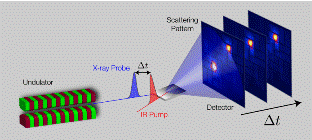Department of Physics and Astronomy: Publications and Other Research

Matthias Fuchs Publications
Document Type
Article
Date of this Version
2015
Citation
Published in Nature Physics 11 (2015), pp 964–970. doi 10.1038/nphys3452
Abstract
X-ray scattering is typically used as a weak linear atomic-scale probe of matter. At high intensities, such as produced at free-electron lasers, nonlinearities can become important, and the probe may no longer be considered weak. Here we report the observation of one of the most fundamental nonlinear X-ray–matter interactions: the concerted nonlinear Compton scattering of two identical hard X-ray photons producing a single higher-energy photon. The X-ray intensity reached 4 × 1020 W cm−2, corresponding to an electric field well above the atomic unit of strength and within almost four orders of magnitude of the quantum-electrodynamic critical field. We measure a signal from solid beryllium that scales quadratically in intensity, consistent with simultaneous non-resonant two-photon scattering from nearly-free electrons. The high-energy photons show an anomalously large redshift that is incompatible with a free-electron approximation for the ground-state electron distribution, suggesting an enhanced nonlinearity for scattering at large momentum transfer.


Comments
© 2015 Macmillan Publishers Limited. Used by permission.